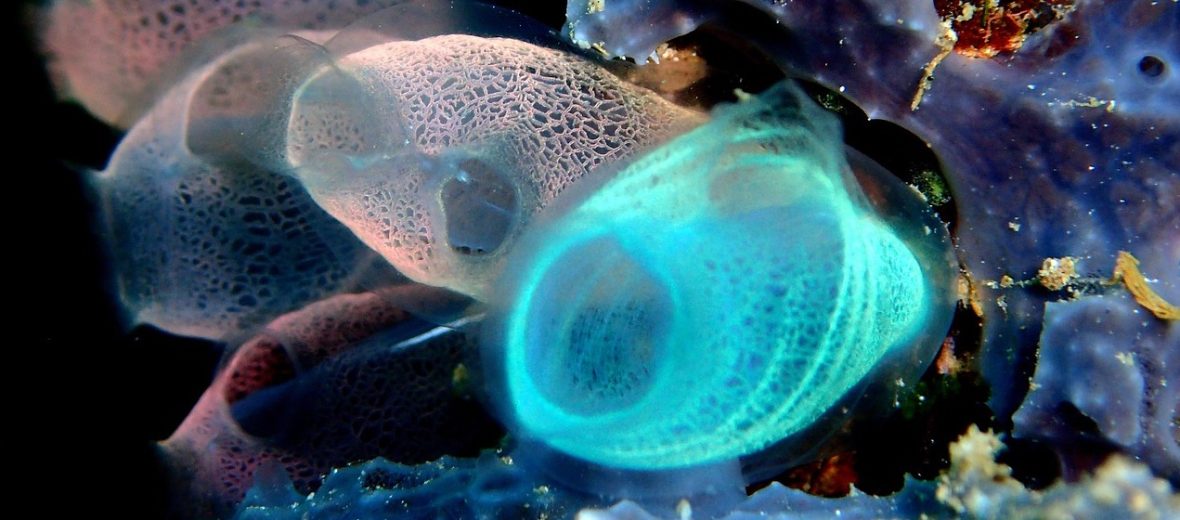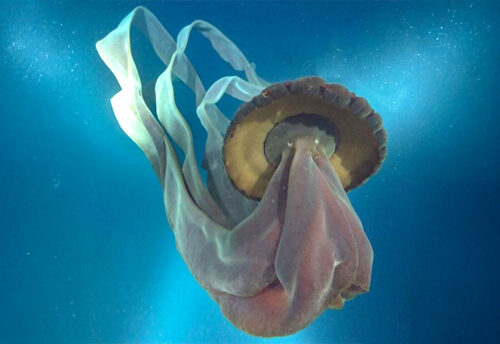
The sea squirt, aka tunicate or ascidian, is a sessile (organism that is permanently fixed to a surface) that can be found in oceans all over the world and at all depths. They typically dwell on rocks, pier pilings, ship hulls, large seashells, and on the backs of large crustaceans. Based on the species, they can tolerate frigid Arctic temperatures or warm tropical temps. Sea squirts are not currently evaluated by the IUCN.
First the Stats…
Scientific name: Ascidiacea
Length: Up to 4 inches
Lifespan: Up to 30 years
Now on to the Facts!
1.) Their body wall is covered by a smooth, thick tunic. This is often times rather stiff. The tunic consists of cellulose, along with proteins and calcium salts.
2.) The tunic is made up of living tissue and typically has its own blood supply. Unlike mollusk shells.
3.) 1 end is always fixed to a surface, sometimes via roots.
4.) The other end has 2 openings called siphons. When taken from the water, these critters will aggressively force out water from their siphons, which earned them the name sea squirts.
5.) They also have a digestive system, a nervous system, and a circulatory system as well.
But wait, there’s more on the sea squirt!
6.) Even though they have a nervous system, these critters lack a true brain.
7.) Nearly all ascidians are hermaphrodites (possess both male and female sexual organs).
Did you know…?
The colonial ascidians have the ability to reproduce both asexually and sexually.
8.) Eggs are released into the water by some individuals, while sperm cells are released into the water by other neighboring sea squirts.
9.) The 2 combine and develop into an almost tadpole looking creature in about 12 – 36 hours and settle onto a surface, as a juvenile, to further develop.
10.) Generally speaking sea squirts can be divided into 2 categories: interdependent (the colonial ascidians) and independent animals (the solitary ascidians).
But wait, there’s more on the sea squirt!
11.) Some ascidians, particularly belonging to the Molgulidae family, have direct development in where the embryo develops directly into a juvenile while not developing a tailed larval form.
12.) These unique organisms have the amazing ability to accumulate pollutants from the water. This is why they are often used in determining the health of reefs, for instance.
Did you know…?
Some metabolites consumed by sea squirts are toxic to cells and are of potential use in pharmaceutical research.
13.) Birds, rock crabs, fish, flatworms, nudibranchs, molluscs, sea otters, and sea stars all prey on sea squirts.
14.) Seeing as they are soft-bodied, these creatures have an almost totally lacking fossil record.
15.) A variety of sea squirts are used in the culinary field as a delicacy.
Now a Short Sea Squirt Video!
Be sure to share & comment below! Also, check out the Critter Science YouTube channel. Videos added regularly!
Want to suggest a critter for me to write about? Let me know here.




Leave a Reply